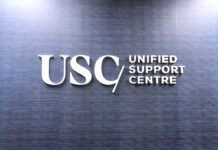Before WWII (1867-1938), universities in Canada were seen as centres of learning for wealthy Canadians. This attitude did not change until after the war, according to the Canadian Federation of Students’ (CFS) website.
As part of Canada’s program to reintegrate soldiers into mainstream society, the federal government introduced grant programs that helped to pay for veterans’ education starting in 1946. These grants were soon extended to universities—reducing tuition and making post-secondary education more accessible for all Canadians.
1960-1980
1960: Tuition fees were reduced country-wide, resulting in high enrolment in universities.
1968: Quebec students protested, calling on universities to abolish tuition.
1974: Quebec students lobby for grants and loans from the federal government after it didn’t abolish tuition.
1976: The Canadian government signed the UN’s Covenant on Economic, Social, and Cultural Rights that would eventually lead to free education throughout the country. The provincial college system was founded during this time also and received similar grants for students and institutions.
1978: Quebec students protest for more accessible loans and scholarships because the government didn’t follow through with the UN covenant.
1980: The government began to reduce their funding for post-secondary education. With increasingly severe austerity measures, these cuts to public service sectors—including education—led to a doubling of university tuition fees in many provinces, according to the CFS. College tuition tripled.
The lean years (1986-1995)
1986: Quebec students lobby for a tuition freeze as tuition soars throughout the country.
1988: Quebec students rally for financial support for part-time students.
1990-1994: Quebec students protest for tuition freezes again.
1995: Prime Minister Jean Chrétien’s government announced another cut of $7 billion to public services, including post-secondary funding.
The CFS takes action (2000-2009)
2000: CFS begins lobbying the federal government to freeze tuition. They froze tuition in Manitoba.
2001: CFS was successful in freezing tuition in British Columbia.
2004: Ontario premier Dalton McGuinty follows through with promise to freeze tuition.
2005: Quebec students protested the transition from student grants to loans.
2006: Ontario premier McGuinty implements the Reaching Higher framework, which raised tuitions but introduces more loans and grant options for Ontario students.
2007: CFS froze tuition in PEI. Quebec students fail in their first attempt at a major province-wide strike.
2008-2009: CFS froze tuition in Nova Scotia.
Nov. 5, 2009: Day of Action launched by the CFS and the Canadian Union of Public Employees (CUPE) saw students from 16 Ontario universities and 3,000 teaching assistants and research assistants gather at Queen’s Park in Toronto to protest the failure of the Reaching Higher framework in alleviating student debt.
The Maple Spring and its aftermath (2011-present)
March 18, 2011: Quebec student unions started Quebec’s largest student protest in the province’s history in reaction to the proposed 75 per cent tuition hike, which would be implemented by Premier Jean Charest by 2016.
Nov. 10, 2011: Over 20,000 students protested outside the premier’s office.
Feb. 17, 2012: Thirty-seven students were arrested after they vandalized CÉGEP Vieux-Montréal, a small college.
Feb. 20, 2012: 37,000 students put their education on hold to protest tuition hikes.
Feb. 23, 2012: Montreal’s Jacques Cartier Bridge was reopened after student protesters were removed by police during rush hour.
March 20, 2012: Protesters were fined following a protest in Candiac, QC.
March 22, 2012: Thousands of students descended on downtown Montreal.
March 27, 2012: Student protests were ended by police in front of Quebec’s liquor board.
April 19, 2012: Quebec’s premier asked student unions to prevent further vandalism from protesters.
April 27, 2012: The Quebec government proposed to spread out a tuition hike over 7 years.
May 6, 2012: A tuition deal was reached in Quebec but student unions refused to agree to its terms.
May 14, 2012: Line Beauchamp, Quebec’s education minister, resigned in response to the protests.
May 15, 2012: Protesters and police engaged in a standoff at Collège Lionel-Groulx in Sainte-Thérèse, QC.
May 16, 2012: Classes were unable to resume at the University of Quebec in Montreal due to protests. An emergency law was passed by the provincial government to ensure that student protesters could defer the semester and not lose their credits.
May 18, 2012: Bill 78 was passed in Quebec, which made all unapproved protests with more than 50 protesters illegal.
May 22, 2012: The Quebec protests, deemed the “Maple Spring,” reached its one hundredth day.
May 24, 2012: Daniel Gagnier was appointed as the new chief of staff in Quebec and tried to restart negotiations between student unions and the government.
March 23, 2015: “Printemps 2015” became the latest in a series of Quebec student protests against tuition hikes and Quebec austerity measures to be proposed by the Bloc. Protests wrapped up the second week of April.





